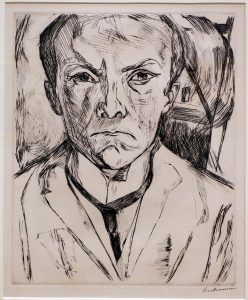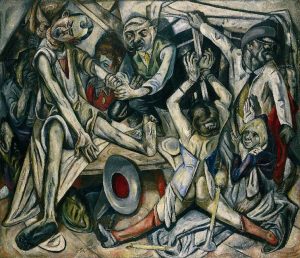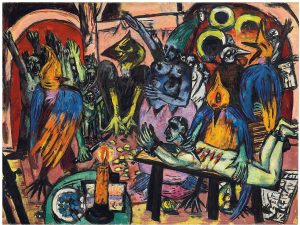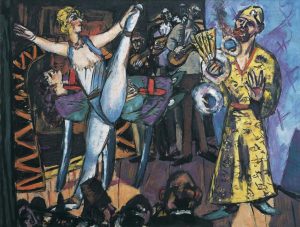Abhishek Kumar
February 12, ON THIS DAY
“Art is creative for the sake of realization, not for amusement: for transfiguration, not for the sake of play. It is the quest of our self that drives us along the eternal and never-ending journey we must all make.”
Max Beckmann
Max Beckmann was a German Expressionist painter and printmaker whose works are highly regarded for their introspective and psychological themes. He was also a prolific draughtsman and draftsman. Beckmann was a significant contributor to the modernist movement and his work is characterized by a bold and expressive use of colour. He was a major influence on the development of German Expressionism and Expressionist painting. Max Beckmann was a politically engaged artist who used his art to comment on the social and political issues of his time. He was particularly critical of the German political and cultural establishment, and many of his works contain sharp social commentary and political satire.

Beckmann was born in Leipzig, Germany, the son of a grain merchant. He was a student at the Royal Academy of Art in Berlin from 1903 to 1906. He began exhibiting his work in 1905 and had his first solo exhibition in 1914. During World War I, he served as an army medical orderly on the Eastern Front and was awarded the Iron Cross for bravery. After the war, he moved to Frankfurt am Main, where he worked as a freelance artist.
Beckmann’s works are known for their bold, often surreal imagery and sharp social commentary. He explored themes such as urban life, the human condition, and the political and cultural upheavals of his time. He worked in a variety of media including oil paint, watercolour, and printmaking, and produced a significant body of work that includes portraits, landscapes, and allegorical scenes.

One of the defining features of Beckmann’s work is his use of powerful, often unsettling imagery to convey complex ideas and emotions. He was known for his ability to convey a sense of the chaos and confusion of the modern world through his bold, often surreal depictions of urban life and the human condition. He was particularly interested in exploring the psychological effects of war and political upheaval, and many of his works contain elements of violence, sexual desire, and the dark side of human nature.
In the 1920s and 1930s, Beckmann was a vocal opponent of the Nazi regime and its ideology, and his works were often seen as a direct challenge to the Nazi worldview. As a result, he faced persecution and censorship by the regime, and many of his works were banned and removed from public view. Despite this, he continued to produce powerful and challenging works that spoke to the political and cultural turmoil of his time.
After the war, Beckmann’s work continued to be politically charged, and he used his art to comment on the post-war world and the challenges faced by the German people. In many of his later works, he explored themes of isolation, displacement, and the search for identity in a rapidly changing world.

Beckmann was also an accomplished printmaker, producing a significant body of work in the medium of lithography. In his prints, he continued to explore many of the themes he had developed in his paintings, but often with a more satirical or politically charged edge.
Throughout his career, Beckmann was recognized as one of the leading artists of his time. He was awarded numerous prizes and exhibitions, and his works were collected by major museums and private collectors around the world. Despite facing persecution and censorship by the Nazi regime, he continued to produce powerful and challenging works until his death in 1950.

Today, Beckmann’s legacy continues to influence and inspire artists around the world, and his works are widely regarded as some of the greatest examples of modern art. If you’re interested in learning more about Max Beckmann and his work, I would suggest visiting an art museum or library, where you can find a wealth of books and resources dedicated to his life and legacy. Max Beckmann’s art is a powerful testament to the political and social commitment of one of the 20th century’s greatest artists. His works continue to be widely studied and admired for their bold imagery, powerful social commentary, and unwavering commitment to the political and cultural issues of his time.





